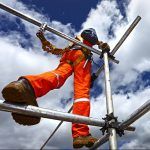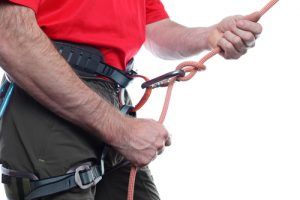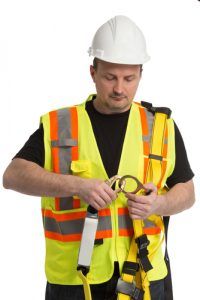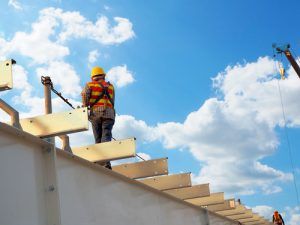
Working at Heights: What You Need to Know for Safety Compliance

“Falls continue to be a leading cause of critical injuries and fatalities of construction workers in Ontario.”
So says Minister of Labour Kevin Flynn.
That’s why it’s crucial that your company have an effective and proactive Working-at-Heights (WAH) safety program in place. With government, media and public awareness at an all-time high, being on the ball in Working at Heights sets you up for success.
Working at Heights Training Programs are Highly Valuable for Proactive Safety
The Ontario Chief Prevention Officer has set out a whole host of regulations and guidelines for employers when it comes to working at heights. Their primary directive is as follows:
“Employers must ensure that certain workers complete a working at heights training program that has been approved by the Chief Prevention Officer (CPO) and delivered by a CPO approved training provider before they can work at heights.”
Who does this apply to? Workers who use any of the following methods of fall protection:
- travel restraint systems
- fall restricting systems
- fall arrest systems
- safety nets
- work belts or safety belts
This all falls under the Occupational Health & Safety Awareness (OHSA) training regulations, which are separate from the training requirements set forth by the ministry’s construction regulations.
Between Jan. 1 and Oct. 31, 2017, 40 workers died in incidents on the job. Eleven of those fatalities were due to falls. These training programs are designed to reduce those numbers and promote a safe approach to Working at Heights.
“By ensuring that these training standards are effective,” says Minister Flynn, “we will reduce fatal incidents at work by making sure workers receive high-quality, consistent training for this high-hazard activity.”

What specifically is covered in a WAH safety training program?
Ministry-approved Working at Heights safety training programs, like the ones offered by Advanced Consulting & Training, Ltd., offer both a theoretical component and practical component. By completing this day-long course, your employees who work at heights – and/or their supervisors – will be well familiar with the proper use of fall protection and prevention equipment. The outcome is a proven way to reduce serious injuries and fatalities.
The theoretical side includes:
- The hazards of working at heights
- Fall prevention & fall protection
- Working from scaffolding
- Rescue plans & warning systems
- Government requirements
- Stakeholder responsibilities & duties
On the practical side:
- Harness “fit testing”
- Proper tie-off techniques
- Beam straps for secure anchor points
- Rope grabs for vertical & horizontal lifelines
Whether someone is experienced and needs a refresher or is going through the material for the first time, these courses are beneficial in promoting a safe environment for working at heights. Through one-on-one and group discussion & activities, with a particular hands-on approach, Working at Heights safety training not only keeps your organization in line with standards & best practices, it helps promote an overall culture of safety & awareness.

“By working with stakeholders to evaluate the WAH standards, we will help ensure construction workers are protected on the job and will return home safely at the end of each workday,” said Dr. Cameron Mustard, president and senior scientist, Institute for Work and Health.
Advanced Consulting & Training Offers Working at Heights Training
What kinds of safety training courses related to Working at Heights do we offer here at Advanced Consulting & Training? We serve Ottawa, GTA and much of Ontario with a variety of course options, including:
Contact us today to find out how Advanced Consulting & Training can help you with a safe & proactive Working at Heights program.

